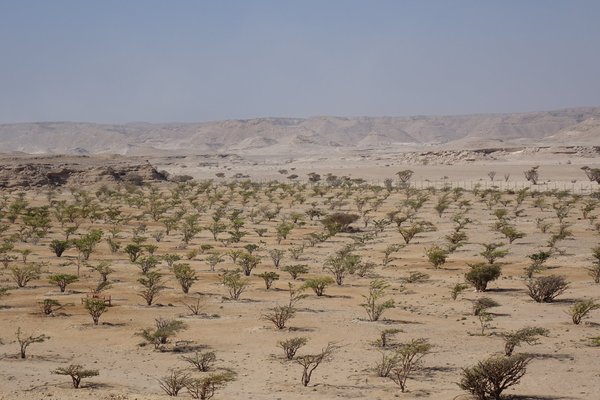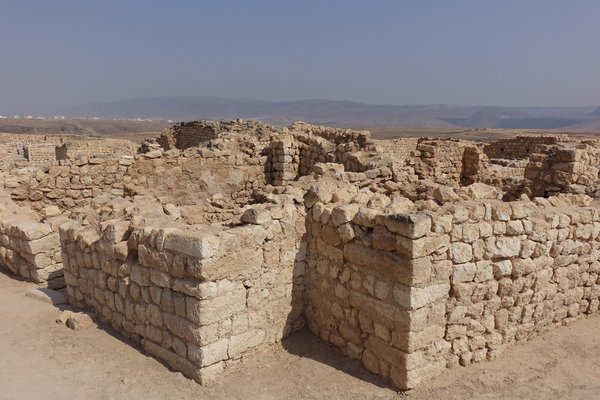Oman
Land of Frankincense
The Land of Frankincense includes frankincense trees, the remains of a caravan oasis and two ports, which were crucial to the incense trade.
Frankincense was one of the most luxurious trade items in Antiquity and its production and trade flourished in this region for centuries. The products from Wadi Dawka were transported to the fortified ports of Khor Rori and Al Baleed and the desert outpost of Shisr. Al Baleed was a stop along the ´Silk Road to the Sea´. Frankincense is still harvested in Wadi Dawka.
Community Perspective: these sites lie in the far south of Oman, so require a domestic flight to Salalah or a 1,050km drive through the desert to reach from Muscat. Visiting them all will take several days by rental car.
Site Info
Official Information
- Full Name
- The Land of Frankincense (ID: 1010)
- Country
- Oman
- Status
-
Inscribed 2000
Site history
History of Land of Frankincense
- 2005: Name change
- From "The Frankincense Trail" to "The Land of Frankincense"
- 2000: Revision
- Includes former TWHS Khor Rori (ancient Sumhuram) and Al-Balid, ancient Zofar (1988)
- 2000: Inscribed
- Inscribed
- 1987: Rejected
- As Khor Rori: Important for intercontinental exchange but not acceptable in its current state - later would reconsider with more evidence
- Type
- Cultural
- Criteria
- iii
- iv
Links
- UNESCO
- whc.unesco.org
All Links
UNESCO.org
- whc.unesco.org — whc.unesco.org/
News Article
- Oct. 23, 2017 timesofoman.com — Sumahram Archaeological Park to get new information centre
- Aug. 20, 2016 timesofoman.com — Frankincense sites in Dhofar receive around 120,000 visitors
Community Information
- Community Category
- Human activity: Transport and Trade
Travel Information
Recent Connections
-
Sir Wilfred Thesiger
Visited Shisr in 1946 during one of (4 … -
Neolithic age
"There is a number of Neolithic sites i… -
Misleading WHS Names
Both grandiose and vague. An alternativ…
Connections of Land of Frankincense
- Individual People
-
-
Ibn Battuta
"We then sailed from Kulwa to the city of Zafar [al-Balid], which is at the extremity of the land of al-Yaman, on the coast of the Indian Sea... The people of this city are men of humility, good dispositions, virtue, and affection for strangers" -
Sir Wilfred Thesiger
Visited Shisr in 1946 during one of (4 in all between 1945 and 1950) his "crossings" of the Empty Quarter which started in (and returned to) Salalah. ("The archaeological site of Shisr, which some believe to be the legendary lost city of Ubar, was formally identified and recognized in the early 1990s by Sir Ranulph Fiennes and a team of archaeologists. This identification gained international attention, although debate continues regarding whether Shisr is indeed Ubar. While the site was explored by Bertram Thomas in the 1930s and Thesiger in the 1940s, its official identification as a potential lost city came later"). SeeSee web.prm.ox.ac.uk
-
- History
-
-
Neolithic age
"There is a number of Neolithic sites in the immediate vicinity of Shisr + Khor Rori A series of archaeological campaigns have identified a considerable number of sites, most of them Neolithic." (AB ev)" -
Silk Roads
Maritime Silk Road; "a harbor along the ´Silk Road to the Sea´" (AB ev)See en.unesco.org
-
- World Heritage Process
-
-
Ten years or more to inscribe
1987-2000 -
Derived from more than one TWHS
Khor Rori (ancient Sumhuram) and Al-Balid, ancient Zofar -
Rejected, and then inscribed
As Khor Rori (1987)
-
- Religion and Belief
-
-
Atlantis
Ubar (Shisr): Atlantis of the SandsSee en.wikipedia.org
-
- Human Activity
-
-
Incense Route
Site holds frankincense trees and the remains of a caravan oasis, which were crucial to the medieval incense trade -
Sea Ports
From the UNESCO site description "......and the affiliated ports of Khor Rori and Al-Baleed " From AB "The port of Sumhuram (Smhrm ? ?His Name is Great?) was founded at the end of the 1st century BCE. Inscriptions record that it was established by LL?ad Yalut to control the trade in Dhofar incense. It is identified as the Moscha of classical geographical texts, where Indian seamen who had brought cotton cloth, corn, and oil in exchange for incense overwintered, waiting for the favourable monsoon winds to take them home."
-
- Timeline
-
-
Built in the 4th century BC
"By 300 BCE the site of Shisr had become part of this network." (formal network for incense) (AB ev) - Khor Rori is later, ca. 1st century BC
-
- Science and Technology
-
-
Recently discovered
Archaeological site of Shisr (ca. 1992, using satellite photos)
-
- WHS Names
-
-
Name changes
Frankincense Trail changed to the Land of Frankincense (2005) -
Misleading WHS Names
Both grandiose and vague. An alternative name could be "Frankincense sites of Dhofar", to reflect the regional limit and that these are mostly archeological sites.
-
News
- timesofoman.com 10/23/2017
- Sumahram Archaeological Park to ge…
- timesofoman.com 08/20/2016
- Frankincense sites in Dhofar recei…
Recent Visitors
Visitors of Land of Frankincense
- Adrian Turtschi
- Afshin Iranpour
- Alexander Barabanov
- Alexander Lehmann
- Ali Zingstra
- Artur Anuszewski
- Aspasia
- Atila Ege
- Bin
- Boj
- Bram de Bruin
- Cheryl
- Christer Sundberg
- Christravelblog
- Clyde
- Cobaltrage
- Els Slots
- Eric Lurio
- Erik Jelinek
- Evgenii
- George Gdanski
- Gernot
- Harry Mitsidis
- henryjiao18
- Iain Jackson
- Jarek Pokrzywnicki
- Jawnbeary
- Karito Vies
- Kbecq
- Kjlauer
- Knut
- Kurt Lauer
- Loic Pedras
- Luis Filipe Gaspar
- Maciej Gil
- marcel staron
- MarcoB_0
- Marcobrey
- Michaela0705
- Mihai Dascalu
- Mikan22
- Mikko
- Miloš Tašković
- Morodhi
- natlefebvre@hotmail.
- Nihal Ege
- Patrik
- Patrik_globe
- Philipp Peterer
- Randi Thomsen
- Reiseblitz
- Reisedachs
- Rick Ohm
- Rodinia
- Roger Ourset
- Roman Bruehwiler
- Sergio Arjona
- Solivagant
- Stanislaw Warwas
- Svein Elias
- Szucs Tamas
- Tarquinio_Superbo
- Thomas Buechler
- Vincent Cheung
- Wojciech Fedoruk
- Zach
- Zoë Sheng
Community Reviews
Show full reviews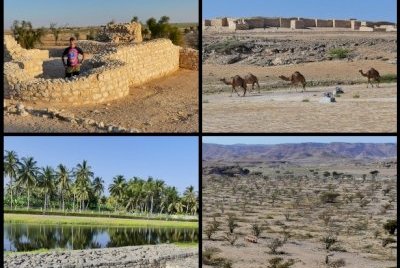
I visited this WHS in December 2020 over several days during my extended road trip in Oman and it turned out to be a real highlight of our trip which would certainly warrant a revisit to Southern Oman any time (perhaps apart from the wet Khareef season).
I visited all 4 components which make up this WHS on separate days. All 4 locations have UNESCO markers just next to their entrances.
The first component I visited was that of Ubar after a long drive from the delisted Al Wusta Arabian Oryx Nature Reserve. I consciously decided to risk the one hour long unpaved road to the Archaeological Site of Ubar as I wanted to venture as far as possible into the Empty Quarter. The drive with a 2WD sedan car was bumpy but perfectly doable. Just make sure to have a spare tire and loads of water in your car just in case something goes wrong (you're likely to see camel skeletons along the way clearly showing what happens if you end up without water in the desert!). If you're visiting from Salalah instead of from Muscat or Duqm, there's a perfectly paved road now and it's just over an hour drive from Wadi Dawkah. On the way, just before arriving at the Ubar Archaeological Site, the green crop circles in the desert are worth a stopover. The lost city of Ubar was relatively recently discovered through high-tech satellite imagery. In total there are some 15 stone structures …
Keep reading 0 comments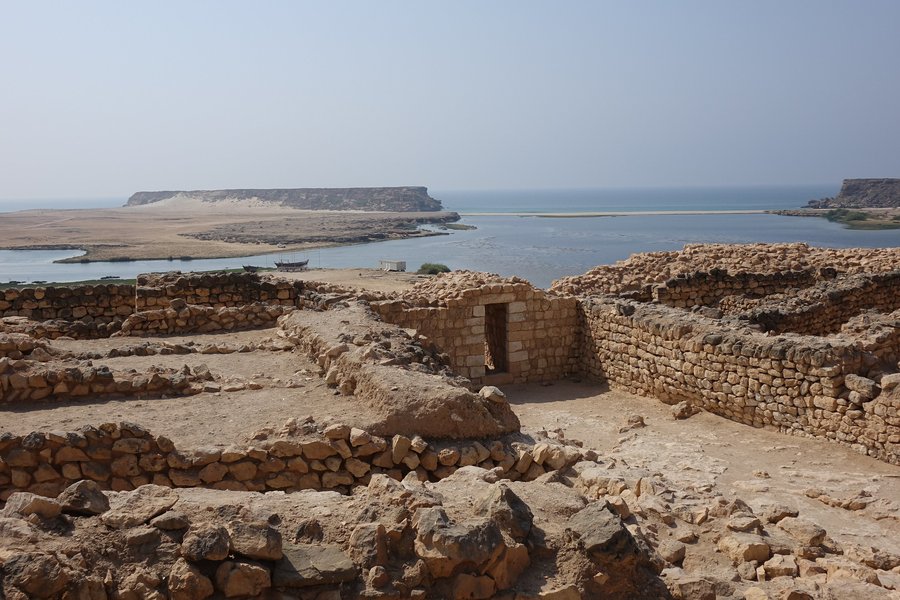
The Land of Frankincense is a good reason to visit the Dhofar region in southern Oman. I flew from Muscat to its capital Salalah and stayed there for 3 nights. Date palms give way to coconut palms and sandy white beaches, which reminded me of Sri Lanka. It’s not an uncommon sight here to see camels crossing the motorway or a camel caravan moving along through the desert. (Frank)incense is everywhere here in the south: stepping into the modern Salalah Garden Mall, the smell already comes to you. The local Al-Husn Souq only sells typical Omani hats and frankincense resin per kilo.
In the outskirts of Salalah lies the Al-Balid Archaeological Park with its Land of Frankincense Museum, 1 of the 4 locations that comprise this WHS. I spent 1.5 hours there in the late afternoon (it's open till 8 p.m.), a perfect time to enjoy its setting of ruins and birds via the walking trails. Al-Balid was a port, so its remains are located near the water. The archaeological site is quite extensive, with a citadel and a grand mosque.
The next day I drove to a second location, the 'incense forest' Wadi Dawkah, a 45-minute drive north of Salalah. Here incense has been cultivated since ancient times, and the forests are still in production. To make the place – which essentially is an agricultural field - more attractive for visitors, they have added parking spaces, an information panel, and public toilets. I even wasn't the only tourist here: …
Keep reading 0 comments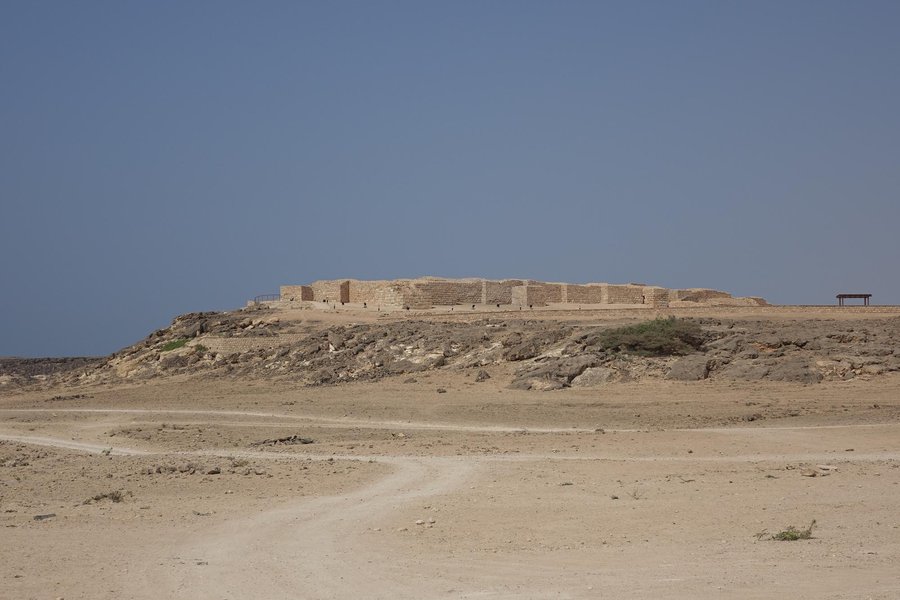
My road trip in Oman brought me to all the 4 places. Two of them, the Wadi Park and Shisr I visited during the drive from Salalah to Muscat.
The wadi is nice, you can see the trees up close. It seemed to me sometimes guides tours are done but i could not see anyone so just wantered a bit around.
Shisr, is it worth it to go? It's a 3-4 hour drive on gravel roads (ok, i guess there is a tarmac road but that's not fun). I though it was, the place is small. An 30 minutes you see most of it for sure. Some background information is given. we did not see any other visitors when we were there.
see some photos on the link below.
Keep reading 0 comments
We were thrilled by this ancient site, its location, and the setting. Much recent work has been done it seems to make it more welcoming and informative to visitors. We also thought it reminiscent of great cities we have seen before, such as Mycenae. The Omanis wantyou to know that they are not a modern tribal sheikhdom, but an ancient and authentic culture, and they have made great and obvious efforts to bring out that history amd make the place both beautiful clean and inviting to serious tourism. We highly recommend making theflight down from Muscat to Dhofar if only to see the wonderul scenery, birdlife and this amazing ancient monument, which fills in so many of the gaps in lay appreciation of history in the region, the trading by sea in ancient times between the Greeks, Egyptians, indus valley, etc. cultures. The frankincense connection is often overlooked. The scenery around this site is also breathtaking.
Keep reading 0 comments
I had to good fortune to travel to this part of Oman during my time in the US Army. It was the spring of 1997. After spending a month at the NCO Academy at Fort Campbell, Kentucky (the best three days of training ever crammed into one month) in the late winter (the ultimate definition of bleak and damp), the balmy coastal weather and dry mountain air of our camp were much needed.
Our deployment kept us too busy to visit the sites listed here. The closest we came to something like those described in the other reviews was a 14th century mosque being excavated on the outskirts of Salahlah by a German team of archaeologists. They graciously gave us a tour of the site which was very interesting, especially in terms of the burned roof timbers. The site was near the beach, but that is about all I can recall.
Lovely landscape, warm temperatures in the spring, great people, and wonderful drives in the mountains. We had a great airborne operation on the beach and I even got to meet the Crown Prince, now King, of Jordan. Go to Oman and enjoy. I wish I could...
Keep reading 0 comments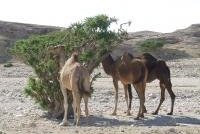
Over Christmas 2011 we visited all four of the designated areas of this site by car from Al Ain (UAE). We also visited Mirbat, another port associated with the frankincense trade, also site of the Battle of Mirbat, where in 1972 9 British & Fijian SAS soldiers held off 400 Yemeni attackers. Mirbat will soon be connected to Muscat by a coastal road, a more scenic but slower route to Salalah than that across the desert.
Keep reading 0 comments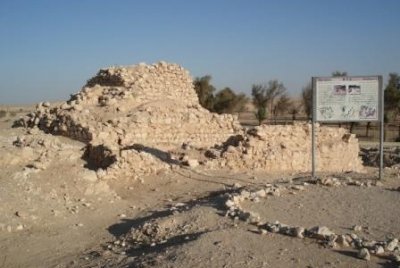
Visited, December, 2010. All components but as other locations (Al-Balid, Wadi Dawkah and Sumhuram) are easily accessible I will focus on the lost city of Ubar.
Shisr or Ubar (Wubar) can be visited by normal car right now. If driving from Salalah just go around 40 km north of Thumrayt where you can take well sealed road to Shasar (oficial name of Shisr at least on roads signposts) total lenght is around 50 km where at least half of it is asphalted, the rest is normal dirty Omani road but accessible on normal car. I doubt if there is any form of public transport to get to the village.
The site is really for the most desperate persons, not very spectacular but at least interesting enough to make a journey. It is well marked with plates and descriptions of seperate archeological findings (Arabic and English), fenced and yet free of charge. As there are speculations if the place is really Ubar you can decide on your own. For me the most spectacular place there was a huge cave partly colapsed - main reason for abandoning the place. Photo attached shows the remains of the fortress or an administrative structure (upper part of the city).
Keep reading 0 comments
I, and my wife who is a classical scholar, have visited the remarkable site at Sumurham several times. The whole site is reminiscent of several ancient sites in Greece The 'gate' is very similar to the lion gate at Mycenai, and the plaque on one wall which is inscribed in what, we suppose, is ancient Phonecian. These similarities indicate clearly that Sumurham was once an important trading centre. It well deserves a concentrated archeological study.
Keep reading 0 comments
We visited Khor Rori at the end of a tour from Salalah just before Christmas. It was late in the day and we were tired but i was completely overwhelmed by the site. I have never visited a historical site of such magical quality. I was so impressed at the quality of the remains, bringing the Sumhuram society to life and its dramatic location almost adds a spiritual quality to the site, especially at sun set. I would have spent all day walking around there if the guide hadn't wanted to get home.
Keep reading 0 comments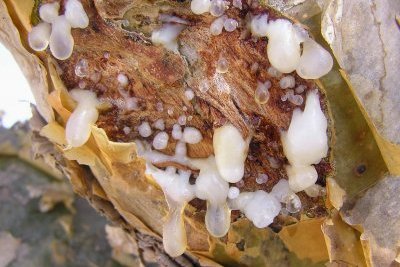
The collective name (The Frankincense Trail) of these sites was only given to them at the suggestion of ICOMOS (International Council on Monuments and Sites) at the time of inscription in 2000 – their original nomination merely listed their individual names. Indeed no real “trail” exists – this WHS consists of 4 disparate sites in and around the southern Omani town of Salalah connected over the centuries by the trade in Frankincense.
(PS UNESCO must have been reading this -at Durban in 2005 they changed the rather misleading previuos title of the site!!)
Frankincense is one of those things which everyone will have heard of (The “Gifts of the 3 Kings” etc) but few will have seen, let alone seen the trees from which it is obtained actually growing and being harvested. The tree (Boswellia) grows in S Arabia and the Horn of Africa. The trade lasted for thousands of years and the substance had great value (more than gold at times). The word oozes mystery and historical connections - from that point of view the sites have considerable potential interest. The reality is somewhat less however and visitors will have to use a lot of imagination to conjure up the past!
3 of the sites are ruined cities :- The first, Shisr, (originally Wubar) lies in the desert where Frankincense was transported north by camel train and the other 2, Khor Rori (originally Sumhuram) and Al-Balid (originally Zafar) were trading ports on the coast. The history …
Keep reading 0 comments
